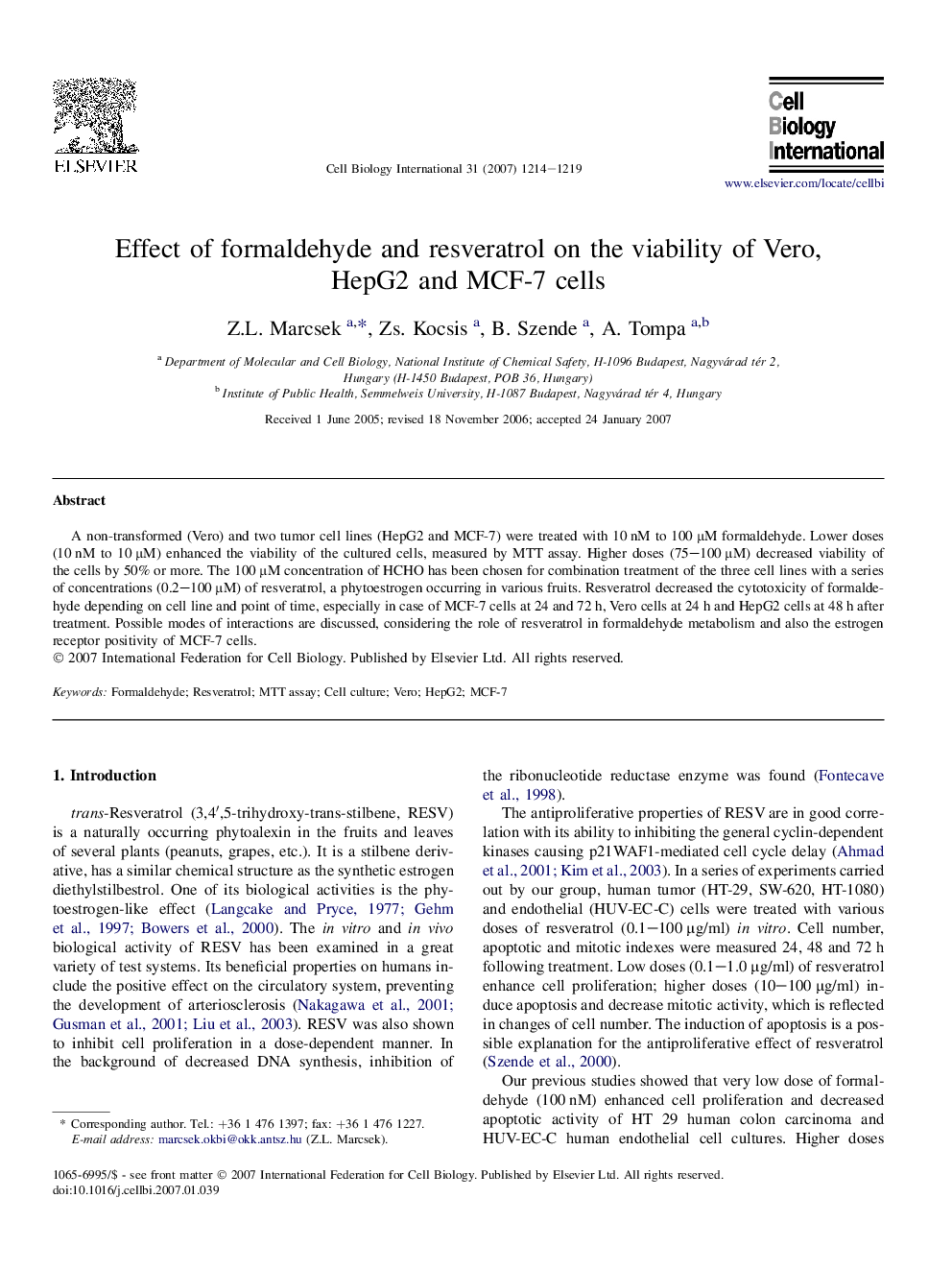| Article ID | Journal | Published Year | Pages | File Type |
|---|---|---|---|---|
| 2067634 | Cell Biology International | 2007 | 6 Pages |
Abstract
A non-transformed (Vero) and two tumor cell lines (HepG2 and MCF-7) were treated with 10 nM to 100 μM formaldehyde. Lower doses (10 nM to 10 μM) enhanced the viability of the cultured cells, measured by MTT assay. Higher doses (75-100 μM) decreased viability of the cells by 50% or more. The 100 μM concentration of HCHO has been chosen for combination treatment of the three cell lines with a series of concentrations (0.2-100 μM) of resveratrol, a phytoestrogen occurring in various fruits. Resveratrol decreased the cytotoxicity of formaldehyde depending on cell line and point of time, especially in case of MCF-7 cells at 24 and 72 h, Vero cells at 24 h and HepG2 cells at 48 h after treatment. Possible modes of interactions are discussed, considering the role of resveratrol in formaldehyde metabolism and also the estrogen receptor positivity of MCF-7 cells.
Related Topics
Life Sciences
Biochemistry, Genetics and Molecular Biology
Biophysics
Authors
Z.L. Marcsek, Zs. Kocsis, B. Szende, A. Tompa,
